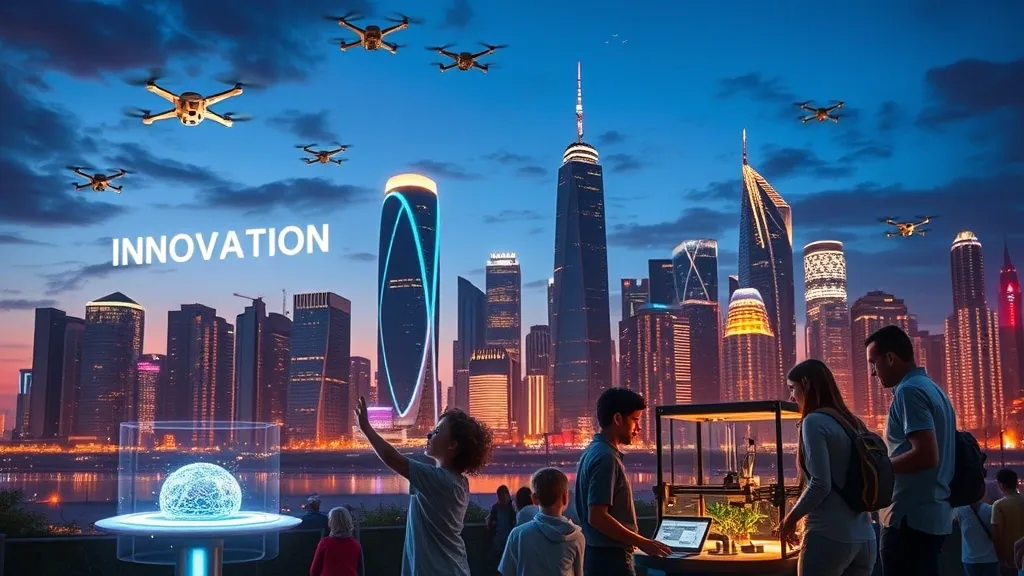Beyond Sight: The Revolution of Smart Canes
So, let’s talk about smart canes. I mean, who would’ve thought that a simple stick could get an upgrade worthy of a sci-fi movie? These nifty gadgets are totally transforming the way visually impaired folks navigate their world. Gone are the days of just tapping around; now, it’s like they’re carrying a little piece of tech magic with them.
Smart canes come packed with sensors, GPS, and sometimes even AI. Yup, AI! It’s like having a personal assistant that fits in your hand. They can detect obstacles, give audio feedback, and help users find their way—kind of like a GPS but for walking. Imagine cruising down the street, and your cane is telling you, “Hey, watch out for that tree!” or “You’re just a few blocks away from your favorite coffee shop!” Now, that’s a game changer!
What really blows my mind is how these canes can connect to smartphones. Seriously, it’s like they’re in a secret club together. Users can get directions, access navigation apps, and even share their location with friends or family for added safety. It’s a whole new level of independence, and who doesn’t want that? I mean, I can barely navigate without Google Maps, and I have sight!
But it’s not just about navigation. Some smart canes are even equipped with features that can help with social interactions. They can recognize faces or even read text aloud. Imagine walking into a room and your cane saying, “Hey, there’s your buddy Sam!” It’s like having a wingman wherever you go. How cool is that?
- Obstacle Detection: Alerts users about nearby objects.
- Navigation Assistance: Provides directions and points of interest.
- Social Features: Recognizes faces and reads text.
Of course, with all this tech, there are still some hurdles to jump over. Not everyone can afford these high-tech canes, and that’s a real shame. Accessibility should be the name of the game. But I’m hopeful that as technology advances, prices will drop and more people can benefit from these incredible tools.
In the end, smart canes are more than just tech; they’re about empowerment and freedom. It’s like giving a new pair of wings to those who need them. And who wouldn’t want to spread their wings a little more?
A New Lens: Augmented Reality and Spatial Awareness
Alright, so let’s dive into this whole augmented reality (AR) thing. If you’re like me, you probably think of AR as that cool tech where you can see virtual stuff overlaid on the real world, like Pokémon popping up in your living room. But for folks who are blind or visually impaired, AR is turning out to be something way more life-changing than catching virtual creatures.
Imagine walking down a busy street, and instead of just relying on a cane or guide dog, you’ve got AR glasses that can literally tell you what’s around you. Sounds like sci-fi, right? But it’s not. These glasses can identify obstacles, read signs, or even describe the environment in real-time. It’s like having a superpower, but without the spandex suit. Seriously, who wouldn’t want to feel like a superhero while navigating daily life?
One of the coolest things about these AR tools is how they integrate spatial awareness. They don’t just give you information; they help you build a mental map of your surroundings. This tech can sense where things are, whether it’s a busy café or a park bench waiting for you to take a load off. And let’s be honest, who doesn’t love a good park bench? Perfect for people-watching or just enjoying the sunshine.
- Enhanced navigation: With AR, users can get real-time directions, helping them move confidently through unfamiliar places.
- Obstacle detection: These gadgets can alert users to things like curbs, steps, or even other people (you know, for those awkward moments when you bump into someone).
- Information at a glance: Want to read a menu or a street sign? AR can help with that too, making everyday interactions a bit smoother.
But here’s the kicker—this stuff isn’t just about tech for tech’s sake. It’s about empowerment. When people have the tools to navigate the world more easily, it opens up opportunities. Suddenly, it’s not just about getting from point A to point B; it’s about living life fully, exploring new places, and feeling more connected to the world around them.
Of course, with any new tech, there are challenges. Access, affordability, and user training are all hurdles we gotta jump over. But I genuinely believe we’re heading in the right direction. The future looks bright—no pun intended—and AR is just one of those exciting new tools that’s helping to change the game for the visually impaired community.
Sounding Out the Future: AI-Powered Navigation
So, let’s talk about something super cool that’s coming up for the blind and visually impaired: AI-powered navigation. I mean, we’re living in a time where technology is basically magic! Imagine a world where getting around isn’t just about memorizing routes or relying on someone else. It’s like having your own personal tour guide, but way less chatty and way more efficient.
AI navigation tools are really stepping up their game. These systems use a combination of real-time data, computer vision, and some serious machine learning to help users navigate their environments. I’ve seen demos that are just mind-blowing. They can identify obstacles, read out street signs, and even detect changes in terrain. Like, if you’re about to step off a curb, your AI buddy’s got your back!
- Voice Guidance: You know how annoying it is when your GPS keeps recalculating? Well, AI navigation can provide smooth, clear voice guidance that feels like a conversation rather than a lecture. It’s like having a friend alongside you, except this one won’t judge you for taking a detour for ice cream.
- Real-Time Updates: Traffic changes, construction, or that random parade blocking the street? No problem! These systems can adapt on the fly, ensuring you’re always on the best path. I mean, who wouldn’t want to avoid a surprise detour?
- Integration with Smart Devices: The cool part? These navigation tools are becoming even more integrated with smartphones and smart glasses. So, you’re not just getting directions; you’re getting a full experience. It’s like combining a navigation app with a personal assistant and throwing in some futuristic tech for good measure.
Now, don’t get me wrong—this tech isn’t perfect yet. There are still challenges, like needing to ensure the accuracy of data and making sure it works in all environments. But honestly, the potential is huge! I sometimes wonder if we’ll all have AI companions that can navigate us, give us directions, and maybe even tell us a dad joke or two along the way. Wouldn’t that be something?
As we look ahead to 2025, it’s clear that AI-powered navigation is not just about helping folks get from point A to point B. It’s about fostering independence and opening up a world of possibilities. And honestly, isn’t that what we all want? More freedom and less hassle? Here’s to a future where navigation is as easy as pie—minus the mess, of course!
Touching Tomorrow: Innovations in Haptic Feedback
You know, it’s wild how technology keeps evolving, especially when it comes to helping those with visual impairments. One of the coolest areas right now is haptic feedback. If you’re not familiar with it, haptic feedback is basically when you can feel something through your skin. Think of it like your phone buzzing when you get a text, but way more advanced and useful for navigating the world. I mean, who knew vibrations could be so powerful, right?
In 2025, we’re seeing some seriously impressive innovations in this field. For instance, researchers are developing wearable devices that provide real-time feedback about surroundings. These gadgets can use vibrations to let users know when they’re getting too close to an object or when there’s a change in terrain. Imagine walking down the street and your wristband gives you a gentle buzz when you’re about to bump into a lamppost. Talk about a personal space guardian!
- Smart Gloves: These aren’t your average winter gloves; they’re embedded with sensors that translate visual information into tactile sensations. So, if you’re touching a textured surface, the glove gives you feedback that mimics what you’re feeling. It’s like having a second sense!
- Vibrating Canes: Traditional canes are great, but what if they could vibrate to indicate different obstacles? Some new canes are being designed to do just that, which could really help with navigation. I mean, who wouldn’t want a cane that’s basically a high-tech sidekick?
- Wearable Vests: This might sound a bit sci-fi, but some vests can actually provide directional cues through vibrations. So if you’re walking towards a street corner, the vest can buzz on one side to guide you. It’s like GPS, but for your body!
Honestly, it’s exciting to think about how these haptic innovations can change the game for many. They’re making the world feel a bit more connected and accessible. And let’s be real, who doesn’t want a little extra help avoiding those pesky lampposts? It’s like having a superpower—just without the cape (unless you want to wear one, no judgment here!).
As we move forward, I can’t help but feel optimistic about how these technologies will empower those with visual impairments. The future’s looking pretty touchy-feely, and I’m here for it!

